Subchaser
Posts: 1201
Joined: 11/15/2002
Status: offline

|
Looks like you're right on troposphere...
quote:
#1
The UV (and I presume WitP) does not take into account the time aircraft need to climb to altitude.
I’m not sure but it probably does thru combined calculation of endurance and climb characteristics. Besides, if your CAP is too low your planes do not have enough time to climb for successful intercept during the combat impulse, when additional CAP scrambles on radar-equipped base during initial impulse it too can be too late because of insufficient climb rate to intercept high altitude raid. Time to get on assigned altitude is always enough, since CAP is being launch at the start of every phase.
quote:
This is very long process (especially in very humid South Pacific) that burns lot of fuel. As result burned fuel means that range is (severly) impaired. But in our UV (and I presume WitP) that's not taken into account. Aircraft have 100% same range when they fly at 100 ft or at 30000 ft.
Low flying aircraft always suffer from high fuel consumption, cause they have to use rich gasoline mixture, while aircraft flying high use poor mixture and save fuel. The main goal is to fly on most acceptable, in terms of fuel consumption, altitude. It depends on type of a engine and supercharger. Fuel amount needed to climb on that altitude is generally lower than amount of fuel wasted while flying below that altitude, of course this is right if target area is not very close to airbase. Aircraft at 20,000 ft always can travel further than aircraft flying at 100ft.
quote:
#2
Most, if not all, aircraft (except those built on purpose) have extremely sluggish response and performance at high altitudes.
When flying is hard combat is even more difficult...
Except for penalty for P-39 and P-400 (they have no turbocharger) when flying above 10000 ft (by deducting 1 point for maneuverability for ach 1000 ft) I think there is no other penalty for any other aircraft in UV (and I presume WitP).
All those aircraft can fight the same (we were never told otherwise) at 100 ft and at 1000 ft and at 20000 ft and at 30000 ft.
If your a/c have excellent climb rate and endurance it can be a serious advantage when fighting on high altitude.
quote:
Therefore with introduction of altitude limit (albeit artificial) we help fixing this problem by allowing oly "optimum" altitudes.
Even if accept your approach this eliminates only technical problem, not tactical. Thus you turn air combat into the trivial calculation of characteristics of a/c and pilots, no environmental factors evolved.
quote:
#3
Altitude is advantage for both bombers and fighters. I agree.
Bombers are protected by altitude and can make shallow dives to increase speed (favorite technique of Germans over England in WWII).
Fighters diving from above have advantage.
But both described tactics have serious drawbacks as well...
Bombers have very hard time in shallow high speed dive to accurately line up and bomb.
Fighters have limits in dive speeds (especially true for early Zero models).
Well, don’t use shallow dive if so. US bombers had no serious problems to maintain formation at high altitudes. It depends on what you’re flying and what’s your goal.
With poor dive speed or with high dive speed it always better to be above than below, some fighter types are better here some are not, but altitude advantage as most important factor remains.
quote:
#4
OK, Bergerud lists that there was high altitude Japanese raids.
It’s not only Bergerud, absolute majority of authors also. In autumn 1942 IJN Betties were usually bombing static targets from 22,000-26,000 ft., and were awfully inaccurate. Low altitudes daylight raids were rare actually. One of the well-known IJN tactical mistakes.
quote:
I don't have that book but do not wish to question it in any way (i.e. I agree with you and accept the info in it).
I highly recommend it to you.
quote:
But my question is how big is percentage of those missions in total number of all missions flown by all sides (i.e. was it 0.1%, 5% or 50%)?
Depends on the year. I believe, it’s only my opinion, ~25% in 1942 everywhere in South Pacific, in 1943 ~50% over the Solomons and ~10-15% over Papua. Never saw any statistics on this case, but I can make my own conclusions.
Zero began to lose its outstanding maneuverability when flying above 15,000 ft. In 1942 this Zero design trade-off did not really matter cause Allied crafts did not do very well that high also, especially P-39 and P-40, worse than Zero in fact, and Japanese pilots, which were aware of this, were trying to fly above to get initiative in combat.
When 2nd generation of US fighters, very able crafts on high altitudes, arrived to South Pacific, Japanese pilots faced principle dilemma, either give altitude advantage to US fighters and engage them much lower to get best of remaining benefit of superior maneuverability on lower altitudes, but at extremely unfavorable tactical position, or climb even higher to engage Americans where their new machines had greater performance but on equal tactical positions. Both variants were dangerous. But P-38s boom’n’zoom tactics had clearly shown that lack of good battle position is more dangerous than inferior performance of Japanese fighters and from spring ’43 Zeros were sighted above 25,000- 28,000 ft. more and more often.
However, air combat is not tied to a certain altitude, initial altitude just set starting layout. Well-executed air battle that began with trim formation in good battle position at altitudes above 20,000 ft. often ended, even if the things went well, with aircraft scattered across the sky at low levels and often alone. Typical example: 13th May ’43. Zeros from 6th Daitai bounced VMF-124 Corsairs over Russells. Although Corsairs were patrolling slightly above 20,000 ft, monitoring situation below. Zero attacked, diving out of the sun from 25,000 ft. In the first pass Zeros shot down several F4Us including major Gise, flight leader, battle ended at sea level altitude. As Ryoji Ohara remembered initial altitude on that mission was 31,000 ft (!). There are many memoirs of Japanese South Pacific veterans, studied by Henry Sakaida, describing japanese attempts to use extreme altitudes to counter US technical and numerical superiority in 1943.
I used this tactics in UV, and with current air combat model, it seems to be the most effective, Zero CAP flying at 30,000 ft. have slightly more chances to succeed in combat against Hellcats and Corsairs. This eliminates constant US bouncing of Zero formations with that never ending “******A6M3 Zero destroyed” message. Best result was 1:3 ratio, in US favor, of course, but this not usual 1:8 when CAP is below 20,000ft.
quote:
Were aircraft (and crews) involved in those missions "special" or just ordinary (i.e. flying all kind of missions and not hand picked)?
What do you mean special? Oxygen mask with 2-5 ltr. tank and ‘winter’ flying uniform is everything that needed for high altitude flying. Even Japanese had electrically warmed flying suits and goggles.
quote:
c) Conclusion
In UV (And WitP) we can choose to use our forces any way we want. We can do whatever we want and for many things that were, let's say it politely, ahistorical, we will not be punished.
I’m not arguing with this, house rules help to simulate warfare more historically accurate. I’m using set of 10-15 rules myself. I’m just against 20000ft limit.
_____________________________
|
 Printable Version
Printable Version













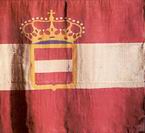


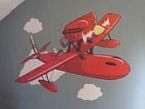
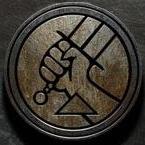
 Righ on! This is exellent book.
Righ on! This is exellent book.

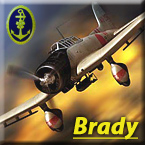
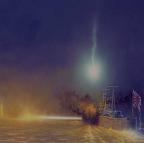

 Are you kidding?
Are you kidding? 




 New Messages
New Messages No New Messages
No New Messages Hot Topic w/ New Messages
Hot Topic w/ New Messages Hot Topic w/o New Messages
Hot Topic w/o New Messages Locked w/ New Messages
Locked w/ New Messages Locked w/o New Messages
Locked w/o New Messages Post New Thread
Post New Thread